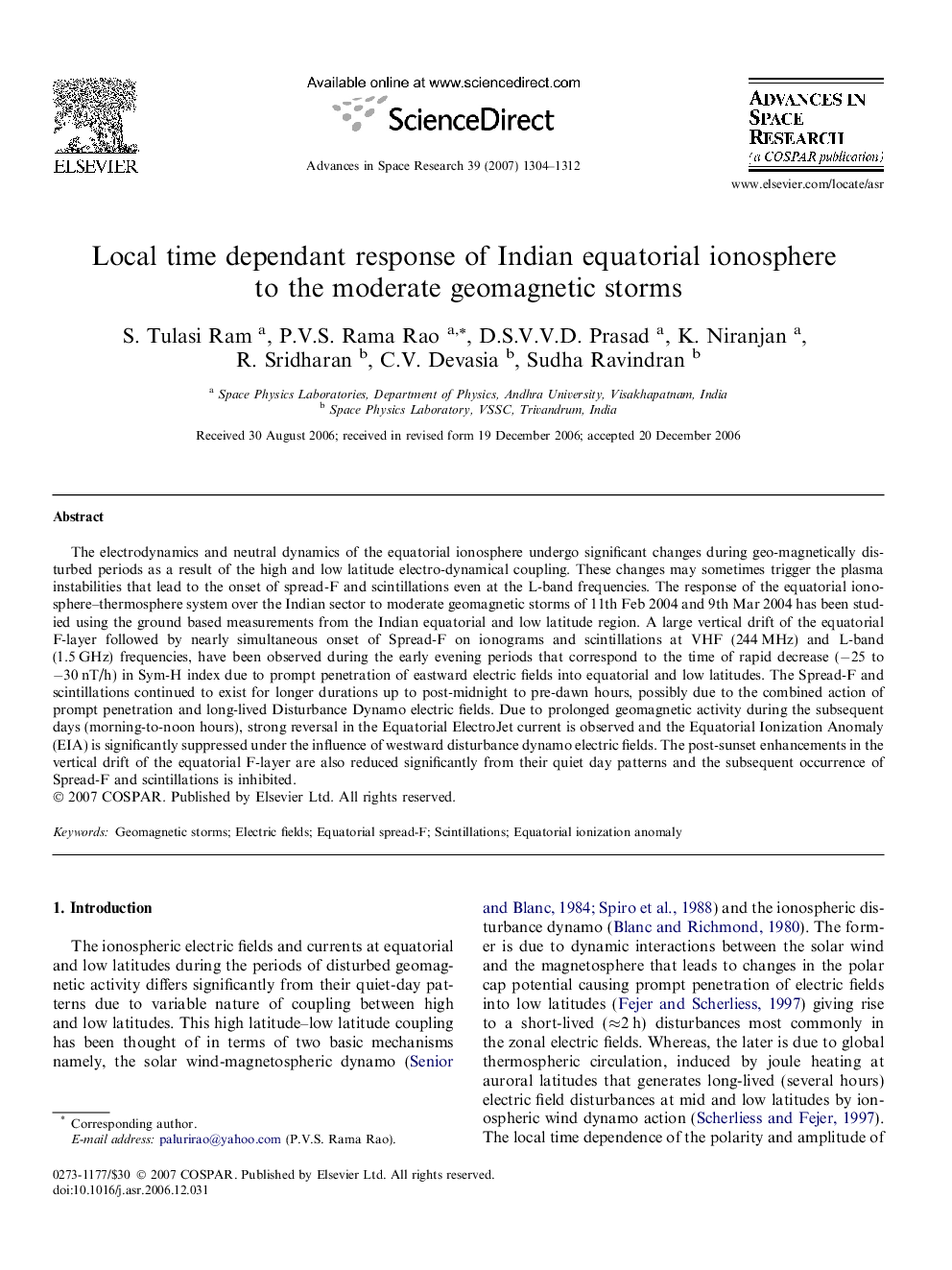| Article ID | Journal | Published Year | Pages | File Type |
|---|---|---|---|---|
| 1767467 | Advances in Space Research | 2007 | 9 Pages |
The electrodynamics and neutral dynamics of the equatorial ionosphere undergo significant changes during geo-magnetically disturbed periods as a result of the high and low latitude electro-dynamical coupling. These changes may sometimes trigger the plasma instabilities that lead to the onset of spread-F and scintillations even at the L-band frequencies. The response of the equatorial ionosphere–thermosphere system over the Indian sector to moderate geomagnetic storms of 11th Feb 2004 and 9th Mar 2004 has been studied using the ground based measurements from the Indian equatorial and low latitude region. A large vertical drift of the equatorial F-layer followed by nearly simultaneous onset of Spread-F on ionograms and scintillations at VHF (244 MHz) and L-band (1.5 GHz) frequencies, have been observed during the early evening periods that correspond to the time of rapid decrease (−25 to −30 nT/h) in Sym-H index due to prompt penetration of eastward electric fields into equatorial and low latitudes. The Spread-F and scintillations continued to exist for longer durations up to post-midnight to pre-dawn hours, possibly due to the combined action of prompt penetration and long-lived Disturbance Dynamo electric fields. Due to prolonged geomagnetic activity during the subsequent days (morning-to-noon hours), strong reversal in the Equatorial ElectroJet current is observed and the Equatorial Ionization Anomaly (EIA) is significantly suppressed under the influence of westward disturbance dynamo electric fields. The post-sunset enhancements in the vertical drift of the equatorial F-layer are also reduced significantly from their quiet day patterns and the subsequent occurrence of Spread-F and scintillations is inhibited.
